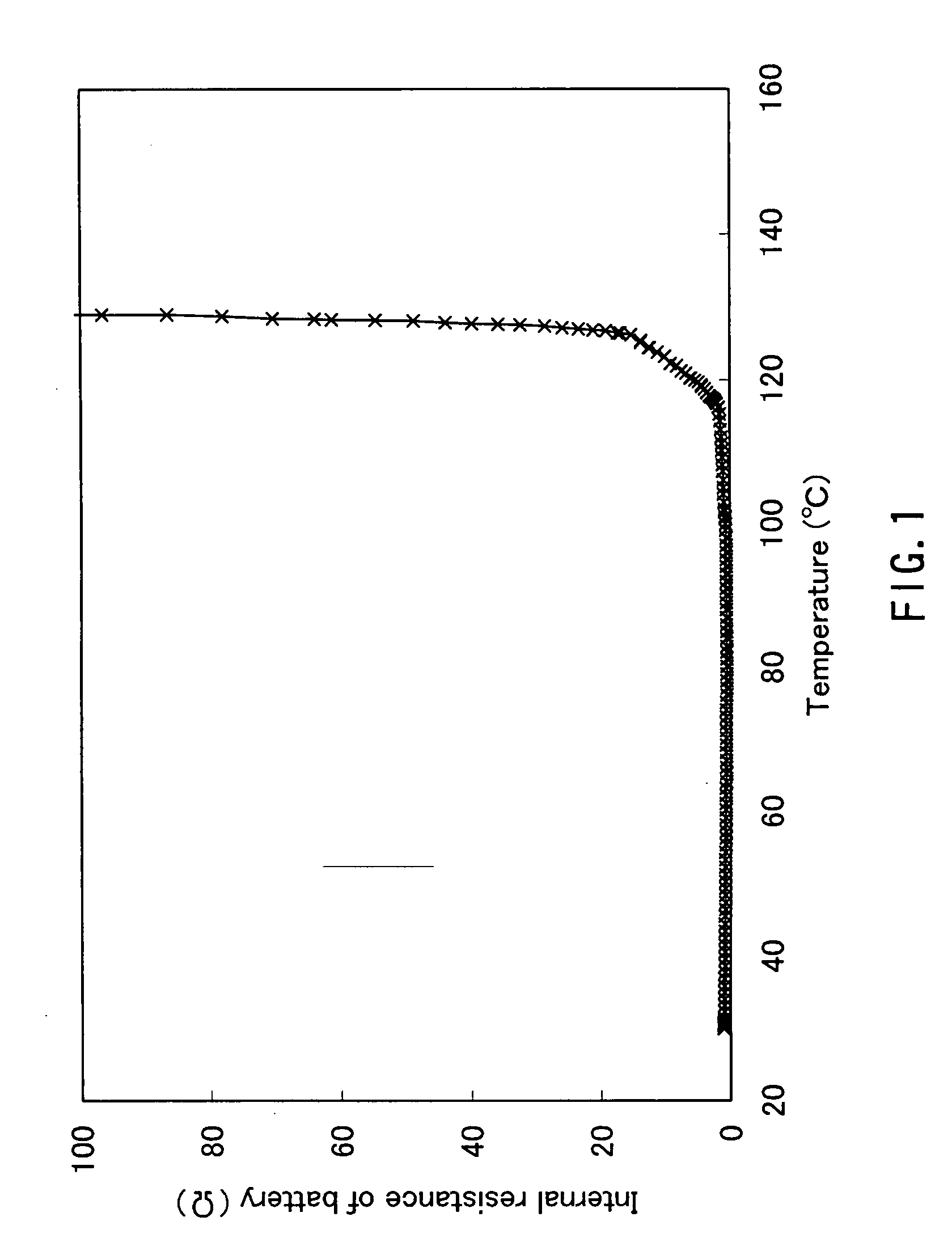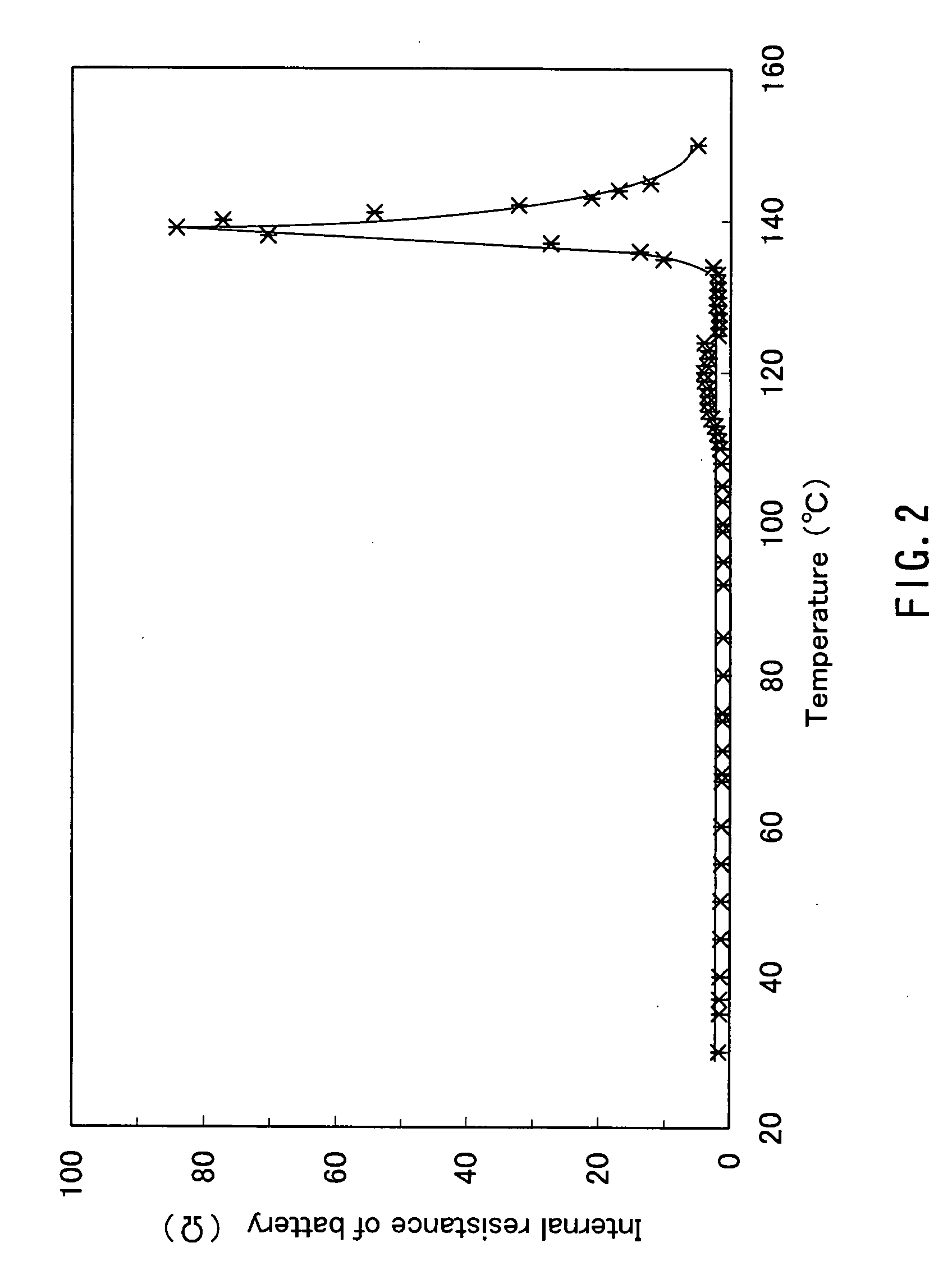Separator for electrochemical device and method for producing the same, and electrochemical device and method for producing the same
- Summary
- Abstract
- Description
- Claims
- Application Information
AI Technical Summary
Benefits of technology
Problems solved by technology
Method used
Image
Examples
production example 1
Production of Negative Electrode
[0117]95 mass parts of graphite as a negative active material and 5 mass parts of PVDF as a binder were mixed homogeneously in a solvent of NMP so as to prepare a paste containing a negative mixture. This paste containing a negative mixture was applied intermittently on both faces of a copper foil 10 μm in thickness for making a current collector so that the length of the applied active material was 320 mm on the surface and 260 mm on the back face, which was dried subsequently. Later, calendering was carried out for adjusting the thickness of the negative mixture layer so that the entire thickness would be 142 μm, which was then cut to be 45 mm in width, and thus a negative electrode 330 mm in length and 45 mm in width was produced. Further, a tab was welded to an exposed part of the copper foil of this negative electrode so as to form a lead portion.
production example 2
Production of Positive Electrode
[0118]85 mass parts of LiCoO2 as a positive active material, 10 mass parts of acetylene black as a conductive auxiliary, and 5 mass parts of PVDF as a binder were mixed homogeneously in a solvent of NMP so as to prepare a paste containing a positive mixture. This paste was applied intermittently on both faces of an aluminum foil 15 μm in thickness for making a current collector so that the length of the applied active material was 319 to 320 mm on the surface and 258 to 260 mm on the back face, which was dried subsequently. Later, calendering was carried out for adjusting the thickness of the positive mixture layer so that the entire thickness would be 150 μm, which was then cut to be 43 mm in width, and thus a positive electrode 330 mm in length and 43 mm in width was produced. Further, a tab was welded to an exposed part of the aluminum foil of this positive electrode so as to form a lead portion.
example 1
[0119]An aqueous dispersion (solid content: 40 mass %) [liquid composition (1-A)] of PE fine particles (average particle diameter: 1 μm; melting point: 125° C.) was applied on both faces of the negative electrode produced in Production Example 1 by a blade coater, which was dried subsequently. As a result, a first separator layer based on the PE as resin A was formed to have a thickness of 5 μm. In the same manner, the first separator layer based on the PE fine particles as resin A having a thickness of 5 μm also was formed on both faces of the positive electrode produced in Production Example 2. The first separator layer formed on the positive electrode and the negative electrode was formed only of the PE fine particles as resin A, and thus the content of the resin A in the first separator layer was 100% by volume.
[0120]2000 g of an aqueous dispersion (solid content: 40 mass %) of PE fine particles (average particle diameter: 1 μm; melting point: 125° C.) and 800 g of ethanol were ...
PUM
| Property | Measurement | Unit |
|---|---|---|
| Temperature | aaaaa | aaaaa |
| Temperature | aaaaa | aaaaa |
| Temperature | aaaaa | aaaaa |
Abstract
Description
Claims
Application Information
 Login to View More
Login to View More - R&D
- Intellectual Property
- Life Sciences
- Materials
- Tech Scout
- Unparalleled Data Quality
- Higher Quality Content
- 60% Fewer Hallucinations
Browse by: Latest US Patents, China's latest patents, Technical Efficacy Thesaurus, Application Domain, Technology Topic, Popular Technical Reports.
© 2025 PatSnap. All rights reserved.Legal|Privacy policy|Modern Slavery Act Transparency Statement|Sitemap|About US| Contact US: help@patsnap.com


